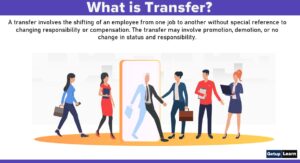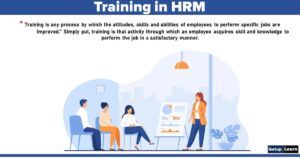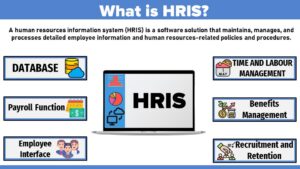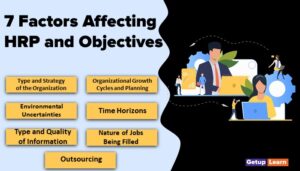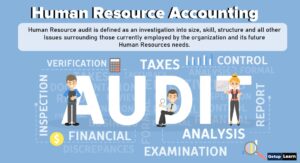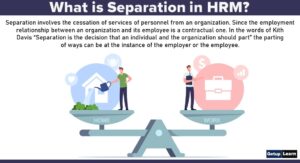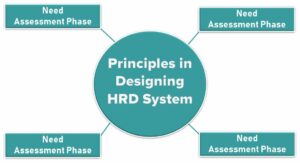Table of Contents
Why We Need HRIS?
HRIS provides human resource professionals with opportunities to enhance their contribution to the strategic direction of the firm, First, by automating and devolving many routine human resource task to the line management, HRIS provides human resource professionals with the time needed to direct their attention towards more business-critical and strategic level tasks, such as leadership development and talent management. We also look at the Functions of HRIS.
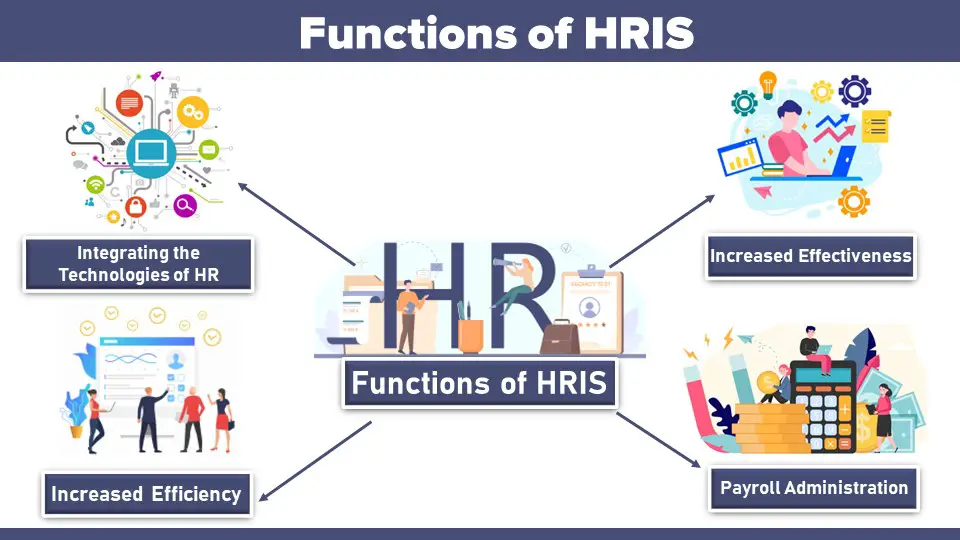
Other incentives for HRIS implementation are mentioned as follows:
- Formulation of policies and programs related to human resources.
- Facilitating decision-making in areas like promotion, transfer, nomination, setting employees provident funds, retirement, gratuity, leave travel concession, and earned leave compensation.
- Supplying data and submitting returns to government and other statutory agencies.
- Collecting appropriate data and converting them to information and knowledge for improved timelessness and quality of decision making.
- Producing a greater number of varieties of accurate and real-time human-resource-related reports.
- Increase competitiveness by Reengineering human resource processes and functions.
- Improving employee satisfaction by delivering human resource services more quickly and accurately.
- Provides a comprehensive information picture as a single, integrated database; this enables organizations to provide structural connectivity across units and activities and to increase the speed of information transactions.
Objectives of HRIS
The main objective of HRIS is to provide assistance and support to the human resource management department to operate as an efficacious and responsible area for the management of human resources, providing perfect, suitable and precise information in terms of decision making, and policy framework and analysis. The other objectives have been stated as follows:
- To identify the HR information that is needed for every area of the organization.
- To form a comprehensive database, with the main purpose to fulfil the needs and requirements.
- To make the information available in the desired form to the right person, in the right form at the right time.
- To develop complete functional specifications for HRIS.
- To design the necessary transaction processing and updated information.
- To use the most efficient method of processing data.
- To identify retrieved and reporting needs of information.
- To prepare relevant and supporting documentation.
- To provide security to necessary, important and confidential information.
- To keep the information up-to-date.
Functions of HRIS
The following are functions of HRIS which are explained in detail:
- Integrating the Technologies of HR
- Increased Efficiency
- Increased Effectiveness
- Payroll Administration
- Manager Self Service
- Employee Self Service
- Benefits Administration
- Workers Compensation

Integrating the Technologies of HR
It’s a fact, that developments in Information Technology have dramatically affected traditional HR functions with nearly every HR function (for example, compensation, staffing, and training) experiencing some sort of reengineering of its processes.
However, this process of change has created significant challenges for HR professionals resulting in the transformation of traditional processes into online processes.
Increased Efficiency
Rapid computing technology has allowed more transactions to occur with fewer fixed resources. Typical examples are payroll, flexible benefits administration, and health benefits processing. Though technologies of early mainframes provided significant efficiencies in these areas, the difference is that the record processing efficiencies that were once only available to large firms are now readily available to any organization size.
Increased Effectiveness
Most often, as with processes, computer technology is designed to improve effectiveness either in terms of the accuracy of the information or by using the technology to simplify the process. This is especially the case where large data sets require reconciliation.
However, onerous manual reconciliation processes may be executed faster, but also with near-perfect accuracy using automated systems. For instance, pension and profit-sharing applications, benefits administration, and employee activities are just to mention but a few. Using computer technology in these processes ensures accurate results and offers substantial simplification and timeliness over manual processing.
Consequently, the vast majority of HR functions have had some degree of automation applied in order to gain both efficiency and effectiveness. In addition to the storing of data, the HRIS system also allows certain tasks to be completed more easily than they would be by hand, as well as reducing the amount of paper that HR departments must store.
Payroll Administration
In thecae days before a company used an HRIS, payroll could be a very tedious and long process that had the potential for many errors, as employers calculated the number of hours worked, then calculated pay due to an employee, and deduction percentages and rates that needed to be removed from a paycheck.
With the use of an HRIS, this process can become a much smoother one where the payroll staff member may only need to enter the hours worked (or possibly not even that for companies that use an electronic time clock that integrates with the HRIS) and then the system will use a series of steps and procedures to do all of the calculations for the employer. Checks are then quickly printed and distributed.
Manager Self Service
companies are often requiring managers to play a larger role in the management of employee and business data. The use of an HRIS can make this an easier task for both the manager and the company that needs to provide access to needed information.
The manager can be given access to portions of the HRIS that may provide employee information, such as contact information, job title and salary, benefit choices, and other key information. Managers can be given the ability to simply view the information or be given permission to make changes that can then be routed to HR for verification before it becomes part of the employee’s record.
Managers can also be given access to recruiting tools, performance evaluation forms and training, task/project management tools, and business intelligence tools through the HRIS. All of this information can reduce or even eliminate the amount of paper that must flow back and forth from the department to HR.
Employee Self Service
Employees are also being asked to take a more prominent role in understanding, accessing, and updating their HR information. An HRIS can give employees the ability to view information, such as employee handbooks and other company documents, access to forms, benefits and compensation information, performance reviews, and more.
Again, employees can be given the ability to only read information or to request changes by filling out a form in the HRIS that is then routed to HR staff members.
Benefits Administration
The managing of employee benefit plans generates a great deal of paperwork and data, which can be better managed through the use of an HRIS. The system can track benefit eligibility dates, trigger reports to remind HR to notify employees, allow benefit choices to be quickly inputted, and deductions triggered on the payroll side of things.
All of which reduces the communication and paper flow between HR and payroll staff and reduces the likelihood of errors being made at any step in the process.
Workers Compensation
This is an area that requires a great deal of data collection and management, including details about the injury or illness, which staff or witnesses were involved, what medical staff found in examinations, restrictions that are placed on the employee, and government reporting to name a few.
All of this data can be easily managed within the HRIS and allow secure storage and retrieval of data as it is needed. An HRIS is a cornerstone of a successful HR department and allows the efficient and cost-effective processing and storage of the data that HR must track in order for a company to be successful.
A company that is not utilizing an HRIS is at risk for costly errors and HR staff members who are wasting time on paperwork and tracking data in ways that reduce their ability to be successful in other areas of their job.
Scope of HRIS
These are some important scope of HRIS explained below:
- Procurement
- HR Planning
- Personnel Administration
- Training and Development
- Maintenance
- Appraisal
- Payroll
- Industrial Relations
- Job Analysis and Design
- Projects and Assignments
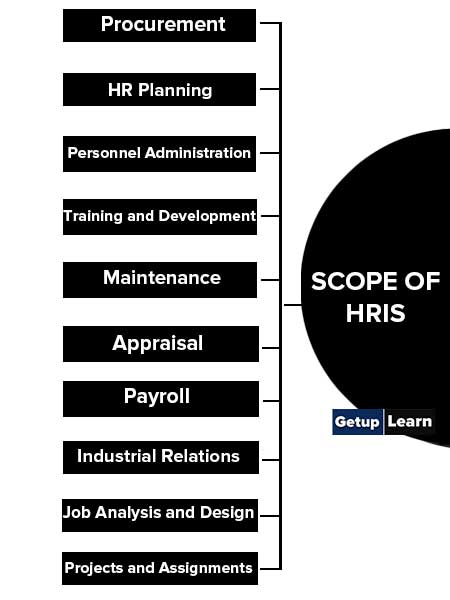
Procurement
In this case, the advertisement module, recruitment sources, profile of the applicants, selection procedure, appointment and storage of placement data are the essential areas. It primarily comprises information regarding the employees, so that processes such as recruitment, selection, transfers, placements, appointments and so forth are made more manageable.
In most cases, when dealing with the employees regarding their transfers and promotions, or other aspects, the managers are required to review previous information or records. The HR managers are able to retain the information in an appropriate manner, making use of HRIS. Therefore, information regarding employees is managed through HRIS.
HR Planning
It includes the information that could assist in the mobilization of human resources, career planning, succession planning, and inputs for skill development. Within the organization, these aspects are imperative. These are considered important in leading to growth and development of human resources, improvement in their skills and abilities, motivating them to perform their job duties well, and achieving the organizational goals and objectives.
The human resources are the ones, who are required to work diligently and resourcefully in order to accomplish personally as well as professional goals and objectives. HRIS renders a significant contribution in leading to the progression of human resources.
Personnel Administration
This is used to maintain the personnel records of each employee. When the employees are recruited within the organization, then it is imperative to maintain their records. These include demographic information, date of joining, designation and any other aspects that have taken place within the organization, such as promotions or transfers and even demotions.
The other areas include information in terms of performance of job duties, pay and reimbursements given, rewards and benefits given and so forth. This information is usually consulted by the managers and supervisors, in case they need to know any of this information in terms of the employees.
Training and Development
Training and development programs are initiated by the employers with the main purpose of developing the skills, knowledge and information among the employees. These programs are meant to generate awareness among the employees and make provision adequate information to them in terms of various aspects of the organization, such as history, departments, personnel, job duties and so forth.
The main functions that are implemented by the training and development sub-system information are, designing of course material, training schedule, training module, training methods, and appraisal of the training program. The upper management in consultation with others is required to take into consideration these aspects.
Maintenance
This system is designed to contain data in terms of the health, safety and welfare of the employees within the organization. In factories and industries, such as gem cutting, silk weaving, lock industries, mining etc. where the job duties of the individuals are hazardous and involve risks, in such cases, there is a number of aspects that are needed to be taken into consideration.
These include providing appropriate training to them to make use of machines and equipment, as lack of training may cause accidents, creation of amiable working environmental conditions, adequate supervision, maintenance of agreeable terms and relationships with other members of the organization and so forth.
Appraisal
It contains information in terms of the performance rating of the employees. These are the inputs that lead to transfers, promotions, increment, succession planning, career planning and so forth. It is essential to implement the performance appraisal systems, with the main purpose of analysing the performance of the employees.
The managers and the supervisors are required to observe, whether the performance of the employees is appropriate and is effective in the achievement of organizational goals and objectives or if some improvements are required to be made. When positive outcomes are generated as a result of performance appraisal, then the employees and supervisors are satisfied. On the other hand, when negative outcomes are generated, then measures need to be formulated to bring about improvements.
Payroll
This system contains information in terms of salaries, reimbursements, incentives, overtime allowances, wages and so forth. Within the organization, there are employees, who are efficient, resourceful and diligent in the performance of their job duties.
Apart from their salaries, they earn reimbursements, rewards, and incentives as well. Hence, it is vital to maintain the records of the employees regarding what types of incentives and benefits, they have been awarded for what type of work.
The employees also need an increase in their salary over a period of time and with the improvements that they have made in the performance of their job duties. Therefore, what percentage or amount of increase has been given, is provided in the payroll sub-system information.
Industrial Relations
This system aims at making provision solutions to the problems and difficulties that have been experienced by the trade unions, resolution of grievances, disputes settlements, rewards, and solving other types of problems that may take place between union and management. Within the organization, the implementation of tasks and functions takes place in an appropriate manner, when the management and union form harmonious terms and relationships with each other and work in collaboration.
When individuals appropriately communicate with each other, acquire an adequate understanding of each other’s perspectives and viewpoints and do not disagree or get involved in any types of disputations, then certainly there would be the initiation of an agreeable environment.
Job Analysis and Design
Within the organization, there are numerous types of jobs that individuals are engaged in. The recruitment and selection of individuals, the initiation of training and development programs, the development of skills and abilities and how to go about the performance of job duties in a well-organized manner are the essential areas, which need to be implemented effectually.
For the implementation of these purposes, job analysis and design sub-system information is regarded as an imperative area. The terms and conditions of the job, the adequate performance of job duties, qualifications and skills that the employees are required to possess and areas that need to be considered to perform the job in a well-organized manner are the factors that need to be considered in job analysis and design.
Projects and Assignments
When the organization undertakes certain major projects that are for the welfare of the community, then it is vital for them to maintain adequate records. There are certain organizations that are dedicated to promoting the well-being of the community.
They normally get engaged in the performance of tasks and functions and these may include, alleviating the conditions of poverty and backwardness, promoting literacy skills among the economically weaker sections of the society, women empowerment, measures to curb crime and violence against women and so forth.
The main criteria are identifying the needs of the community and then taking appropriate measures (Human Resource Information System, 2011). When these projects are to be implemented, then research is undertaken on a major scale and records need to be maintained using HRIS.
Designing of HRIS Process
The designing of HRIS consists of the processes and these have been stated as follows:
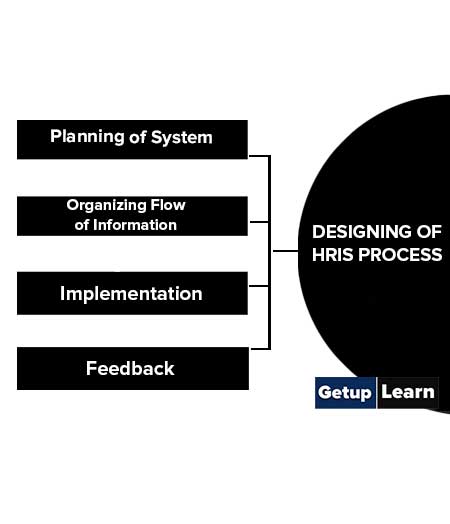
Planning of System
The planning of the HRIS requires the identification of the objectives of the system. This requires the members of the organization to acquire an adequate understanding of the objectives. In addition, one needs to be aware of the tasks and functions that they are required to carry out. In order to put into operation, the tasks and functions in a well-organized manner, it is essential to implement methodical and systematic procedures.
The system has certain boundaries and it is essential for the individuals to understand that they need to carry out their tasks and functions within the boundaries. This step involves the description in generalized terms of the course of action and the limitations within which the system needs to be designed.
Organizing Flow of Information
It is essential for managers to organize the flow of information. The flow of information needs to take place in a methodical and systematic manner. The deficiency under which most of the manager’s functions is the lack of information, the manager wants the information for decision making, enhanced communication would lead to the implementation of job functions smoothly and the managers of all departments should be able to make use of the information systems appropriately.
The system designer should be able to make the decisions in respect of the number of files, which are to be maintained, the technology and equipment which are to be used, the personnel employed and the storage of information required. Cost-benefit analysis of the system is necessary.
Implementation
In the case of implementation of HRIS, the old information flow may be allowed to continue as it is, and the new information system is installed to meet the needs. Another point is, that the old system may be replaced by a new one and it is appropriately installed.
It is important to appoint and train the personnel for operating the HRIS. The procedures for the installation of equipment and development of the support facilities are other major decision areas. Obtaining the reports and documents is another major task that needs to be taken into consideration. The incorporation of the information system and the organization structure is the most difficult part of this stage.
Feedback
The regular feedback obtained is regarding the actual functioning of the HRIS. The way the HRIS is operating, whether it has been productive and beneficial, and whether it is able to meet the needs and requirements of the individuals within the organization are the major areas that are required to be undertaken in feedback.
The feedback is usually obtained by the upper management from the individuals, who are working on HRIS. In other words, those, who are carrying out their tasks and functions through making use of HRIS. It is used to fill the gap in planning and implementation.
It is vital for the system to be reviewed on a continuous basis, taking into consideration the changes within the environment, both internal and external to the organization. The internal and external changes within the environmental conditions have a direct impact on HRIS.
Role of HRIS in Organizations
The role of HRIS within the organizations has been highlighted in the following points:
- HR Planning and Analysis
- Equal Employment Opportunities
- Staffing
- HR Development
- Compensation and Benefits
- Health, Safety and Security
- Employee and Labour Relations
- Management of Records
- Promoting Well-Being
- Behavioural Traits
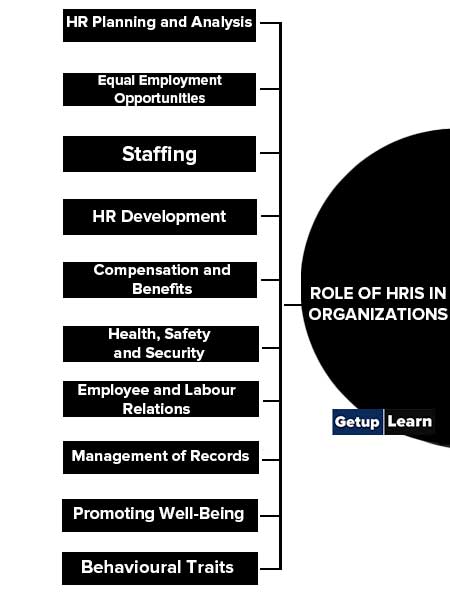
HR Planning and Analysis
In the case of HR planning and analysis, the organization charts, staffing projections, skills inventories, turnover analysis, absenteeism analysis, restructuring costing, internal job matching, and job description tracking are the main tasks that are performed by HRIS.
These aspects are primarily concerned with the development of human resources and conducting an analysis of the areas with respect to human resources. When any negativities are found in these areas, then the HR managers are able to formulate measures that may lead to their resolutions.
Equal Employment Opportunities
The organizations need to formulate this aspect as one of the objectives that equal employment opportunities would be made available to the individuals and there should not be any type of discrimination on the basis of caste, creed, race, religion, gender, and socio-economic background.
Whereas, it is appropriate to make a selection of the individuals on the basis of their educational qualifications, skills, experience, and job requirements. The affirmative action plan, selection of candidates, utilization of workforce, and accessibility examination are the areas that are taken into consideration.
Staffing
Staffing is the function of selection and recruitment of the individuals within the positions that are required to get filled. To carry out this function, the members are required to ensure that their educational qualifications, competencies, experience and other professional traits are in accordance with the needs and requirements of the jobs.
With an aim to perform this function effectually, there are certain strategies and methods that need to take into account certain aspects. These include interviews, written tests, and conducting other areas that are imperative to staff competent individuals.
HR Development
The development of human resources is regarded as one of the important aspects of the organization. This is considered important because human resources are regarded as the major assets that are meant to implement all types of tasks and functions.
The main areas that are vital in HR development are skills and abilities, competency traits, generation of awareness, job requirements and interests and aspirations of the individuals in terms of promotional opportunities. To carry out this function effectually, it is essential to put into practice, the strategies and methods in an appropriate manner.
The information that is maintained regarding HR development will be helpful to the HR professionals in making provision of more targeted information and direction to the managers. Human resources should be made to work more operatively in terms of the developmental plan to meet the organizational goals and employee requirements.
Compensation and Benefits
Salaries, compensation, and benefits are the important areas that are of utmost significance to the employees, which they earn to sustain their livelihoods. Employees work to make operative use of their qualifications, aptitudes, and competencies.
Another reason for working is to bring about career progression and earn promotional opportunities, whereas another reason is to earn compensation and benefits. The employees need to perform their job duties in a manner that they not only earn salaries, but also rewards and incentives.
Health, Safety and Security
In organizations and particularly in hazardous jobs such as, mining, plantations, hotel industry, etc. it is vital to formulate measures that are used to promote health, safety and security among the employees. These are by creating the working environmental conditions in a manner that employees should feel safe and secure.
Within the working environment, individuals, especially women have been subjected to crime and violence. Therefore, it is vital to make provision for equal opportunities and treat all individuals with respect, consideration, and courtesy.
Employee and Labour Relations
Within the organization, it is vital for the management and union to work in cooperation with each other. Disagreements and conflicts lead to the occurrence of impediments and the first and foremost area in employee and labour relations are to lead to their resolution.
For leading to the progress and development of the organization, it is vital for the management and union to provide solutions to all types of conflicts and disputes that may take place. The union needs to render their job performance in accordance with the expectations of their employers. On the other hand, the management needs to fulfill all demands of the union, provided, they should be just and fair.
Management of Records
As it has been stated that human resources are the assets of the organization. In some organizations, recruitment and selection of employees take place periodically, whereas in others, they may take place on a frequent basis. HRIS has the main function of managing the records regarding the employees.
There are numerous types of records regarding human resources, demographic information, salary and reimbursements, training and development programs, the performance of job duties, or records that are even maintained in terms of the accidents or any problems that they have experienced within the organization.
The records that are maintained through HRIS include the personal history of the employees, name, gender, date of birth; work history, the first day worked, employment status, positions in the organization, appraisal data, and pre-organizational information, training and development programs completed both internally and externally; career plans including mobility; and skills inventory, including skills, education, and competencies.
Promoting Well-Being
The employees need to be communicated with adequate information that may lead to their well-being within the organization. This includes making provision of information regarding how to react, when they are experiencing any type of discriminatory treatment, not given equal opportunities, or when they experience any type of crime and violence.
In this case, the employees are also provided with the training that may lead to their well-being and safety. It is essential for the employees to depict the traits of morality and ethics, when they are putting into practice any type of measures that may lead to their well-being and safety.
Behavioural Traits
Attitude and behavioral traits of the employees are the areas that are of utmost significance. Besides the acquisition of educational qualifications, experience, aptitudes, and proficiencies, the employers take into consideration the behavioral traits of the individuals.
The behavioral traits of the individuals are the primary aspects that influence the performance of their job duties. The most important is the possession of communication skills. Every job requires the individuals to communicate with others, whether one is engaged into a white collar job or a blue collar job.
Hence, it is vital for the individuals to put into practice, the traits of morality, ethics, honesty and truthfulness within the organization.
What are the functions of HRIS?
The following are functions of HRIS which are explained in detail:
1. Integrating the Technologies of HR
2. Increased Efficiency
3. Increased Effectiveness
4. Payroll Administration
5. Manager Self Service
6. Employee Self Service
7. Benefits Administration
8. Workers Compensation etc.
What are the scope of HRIS?
These are the scope of HRIS:
1. Procurement
2. HR Planning
3. Personnel Administration
4. Training and Development
5. Maintenance
6. Appraisal
7. Payroll
8. Industrial Relations
9. Job Analysis and Design
10. Projects and Assignments etc.
How many steps are there in HRIS process?
The following are the steps of designing of HRIS process:
1. Planning of System
2. Organizing Flow of Information
3. Implementation
4. Feedback etc.
What are the main role of HRIS in organizations?
The role of HRIS within the organizations has been highlighted in the following points:
1. HR Planning and Analysis
2. Equal Employment Opportunities
3. Staffing
4. HR Development
5. Compensation and Benefits
6. Health, Safety and Security
7. Employee and Labour Relations
8. Management of Records
9. Promoting Well-Being
10. Behavioural Traits etc.

